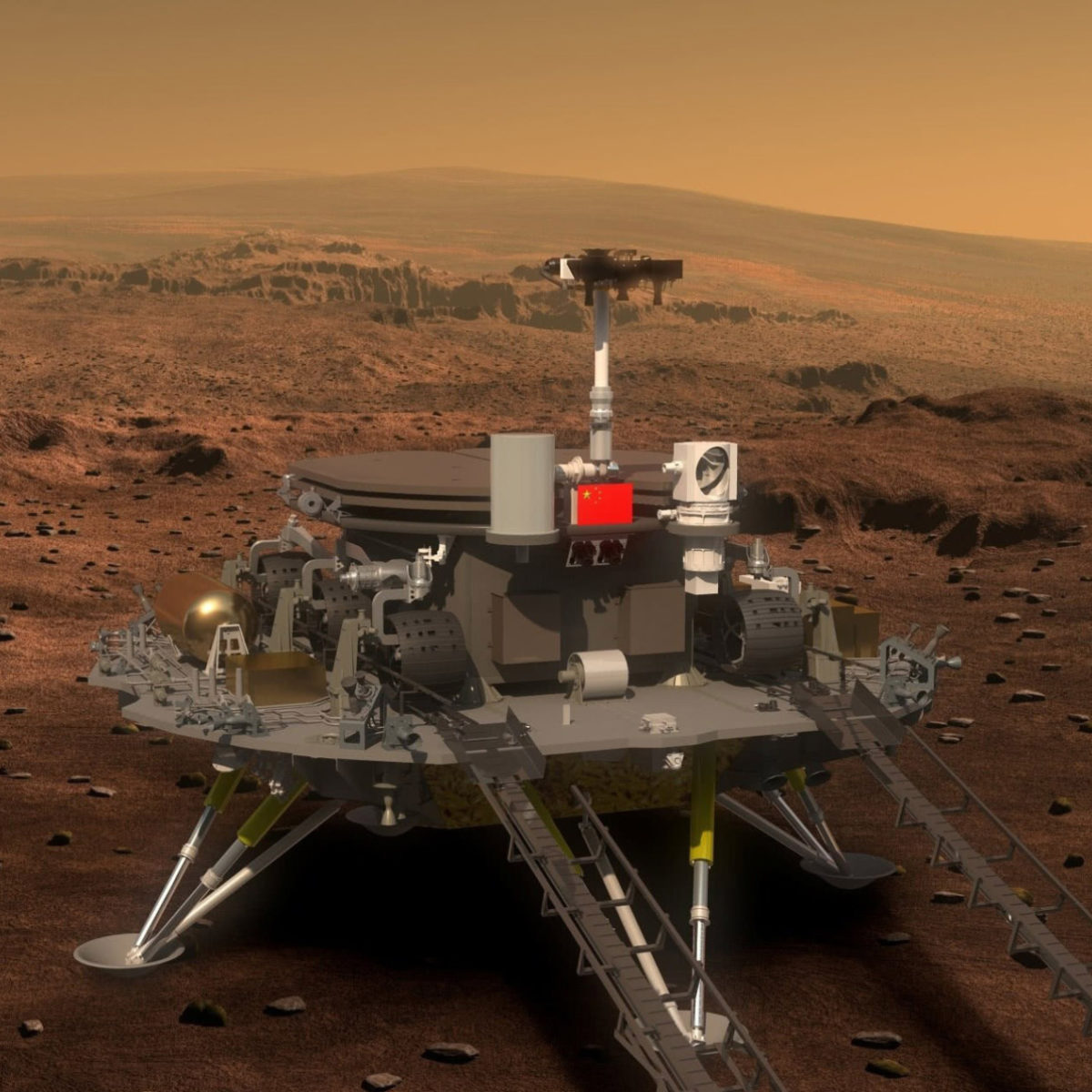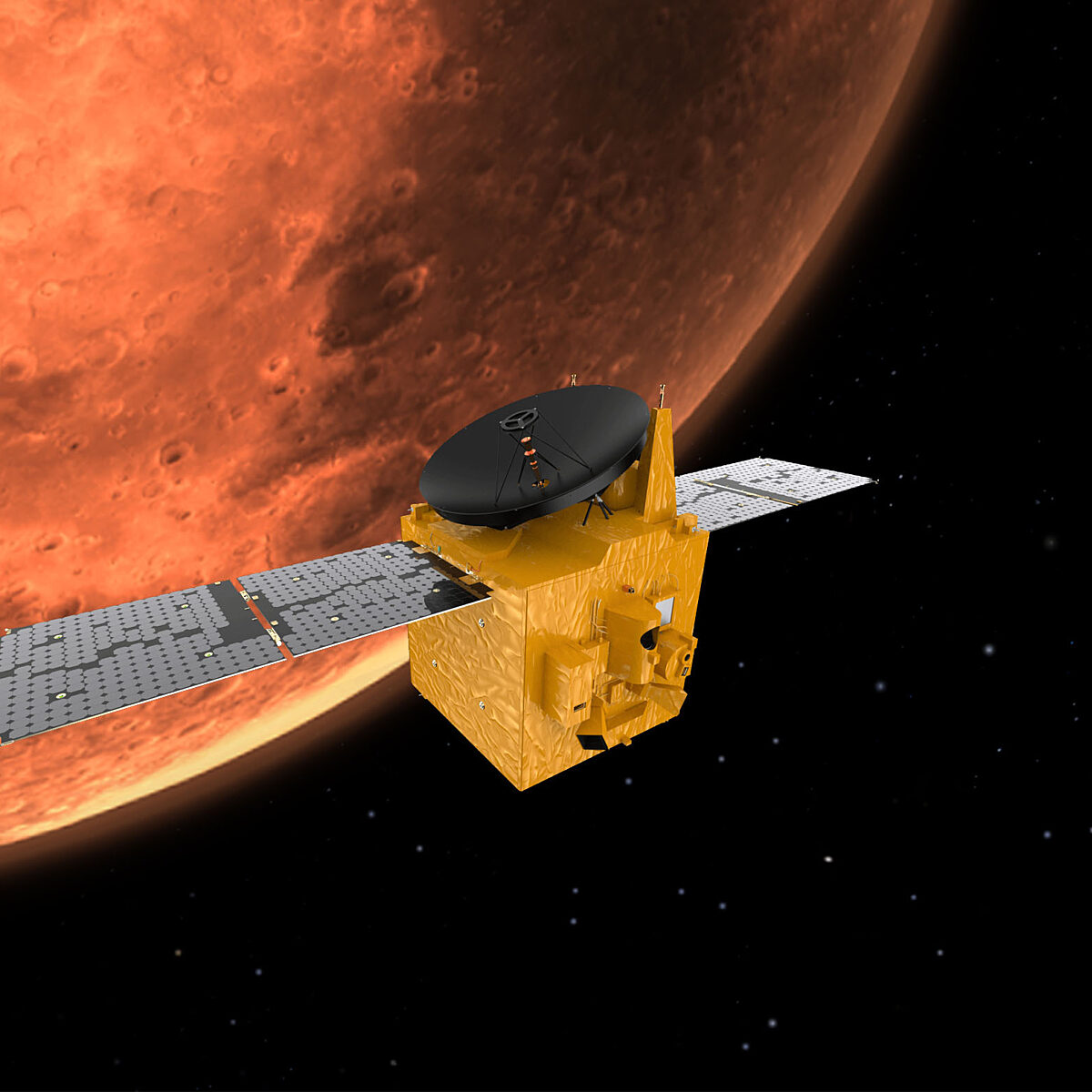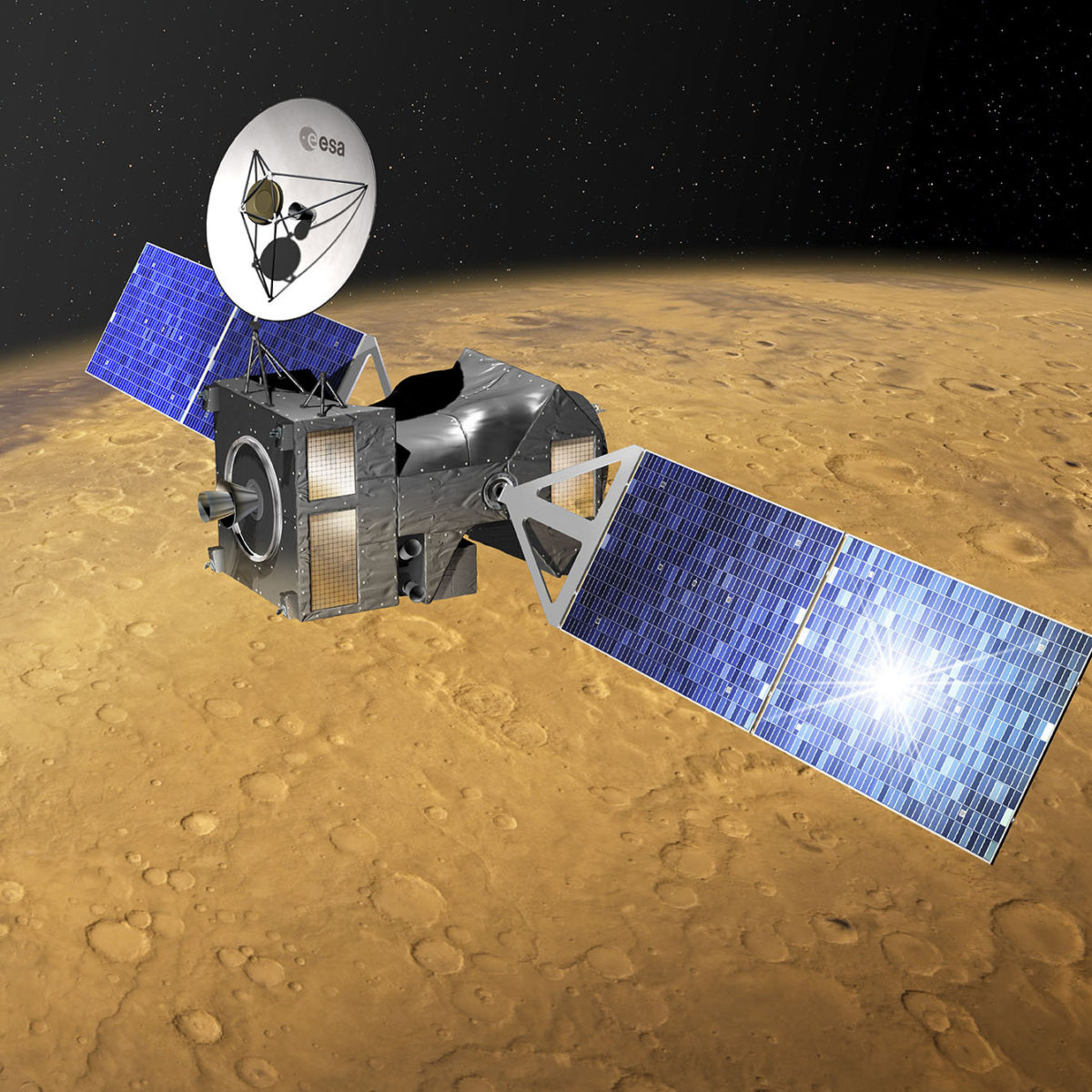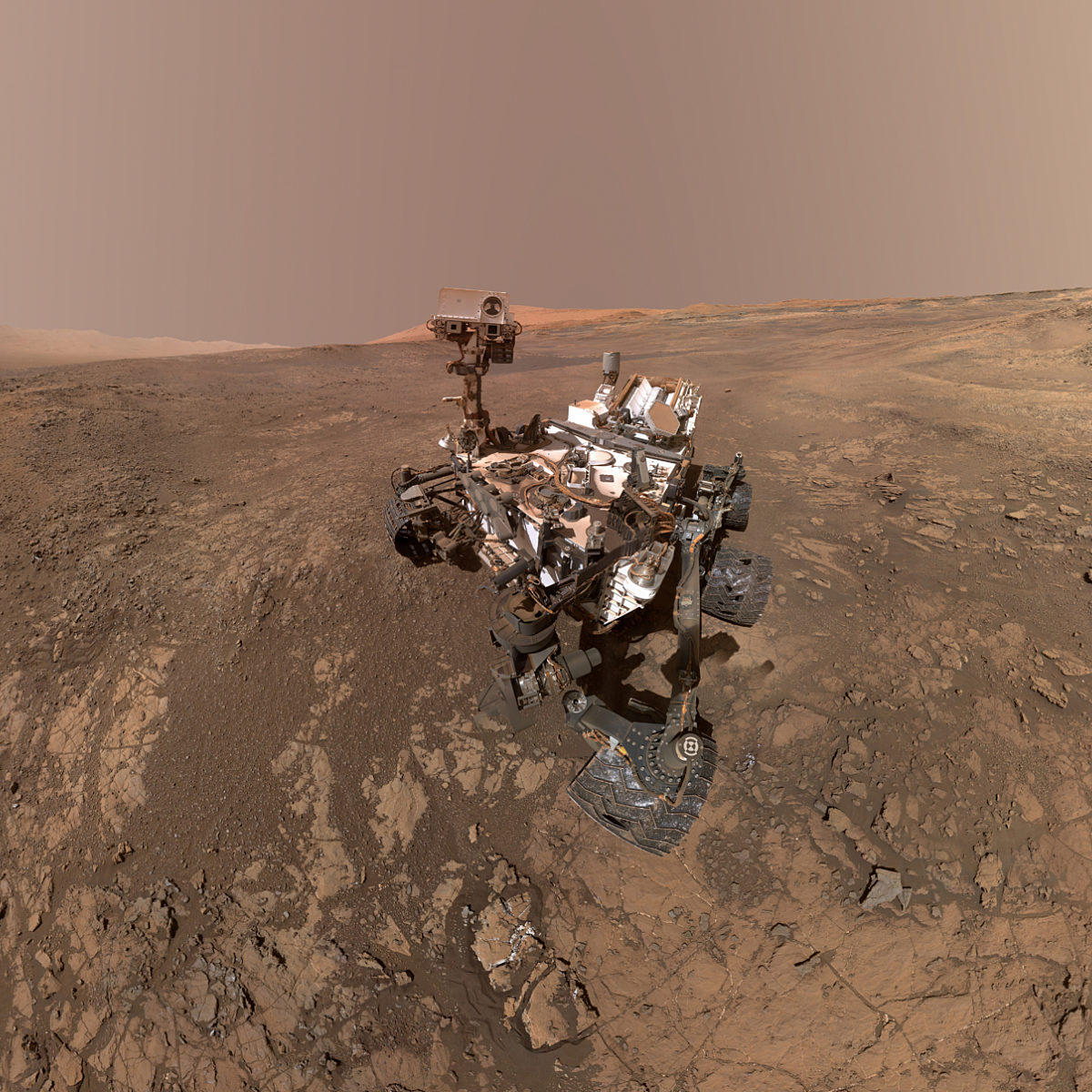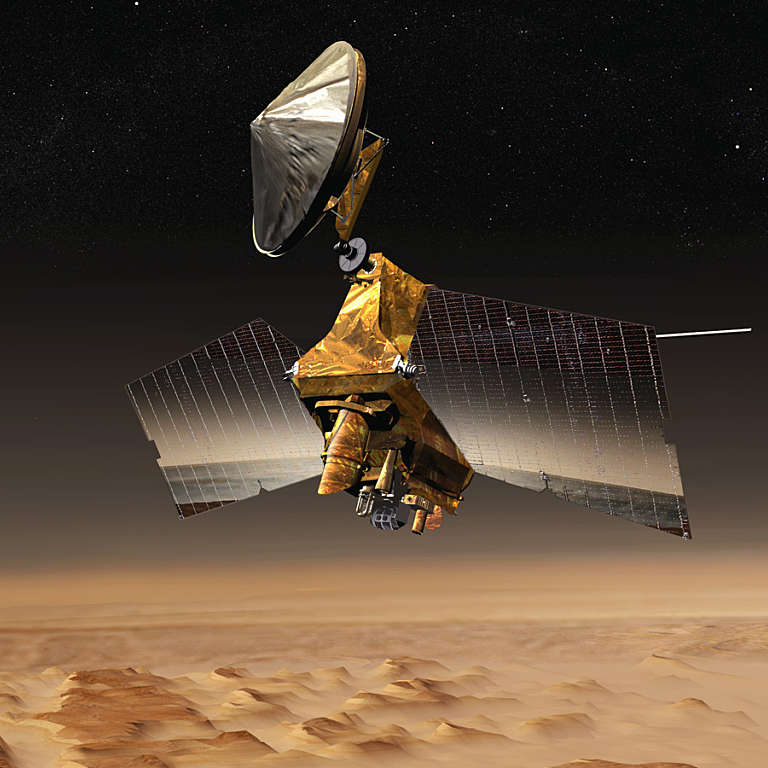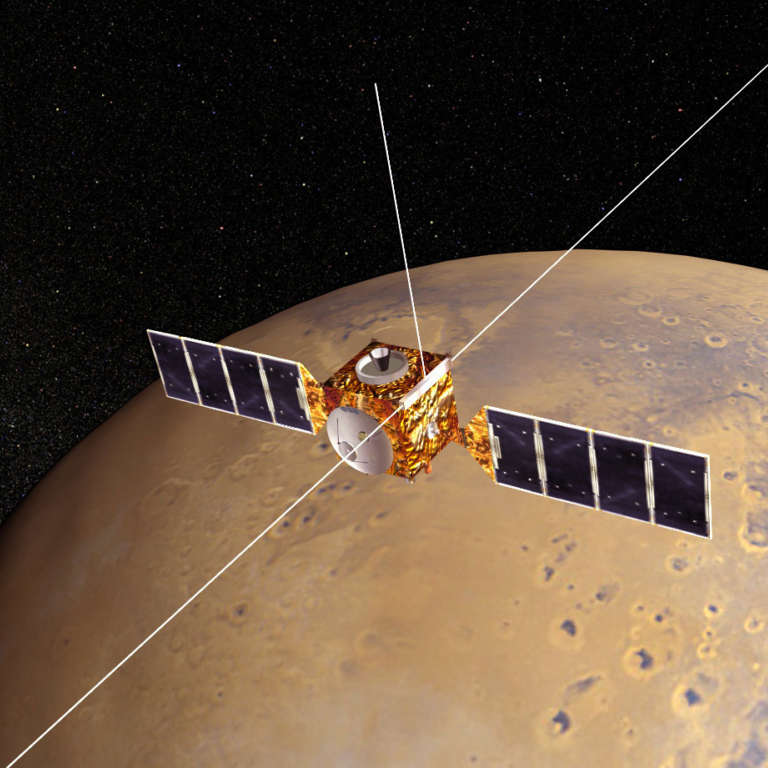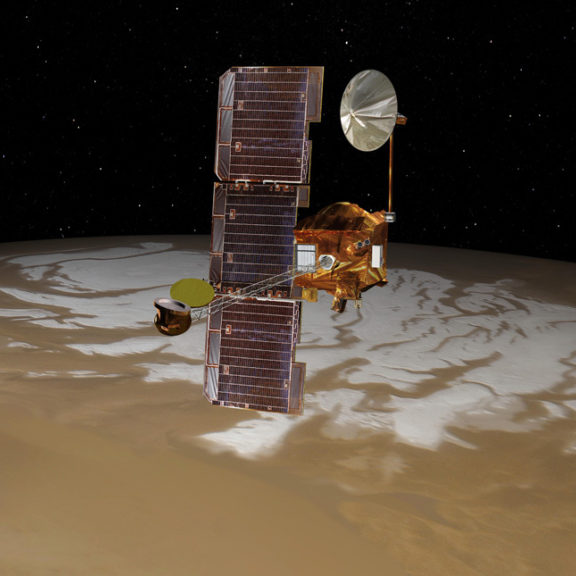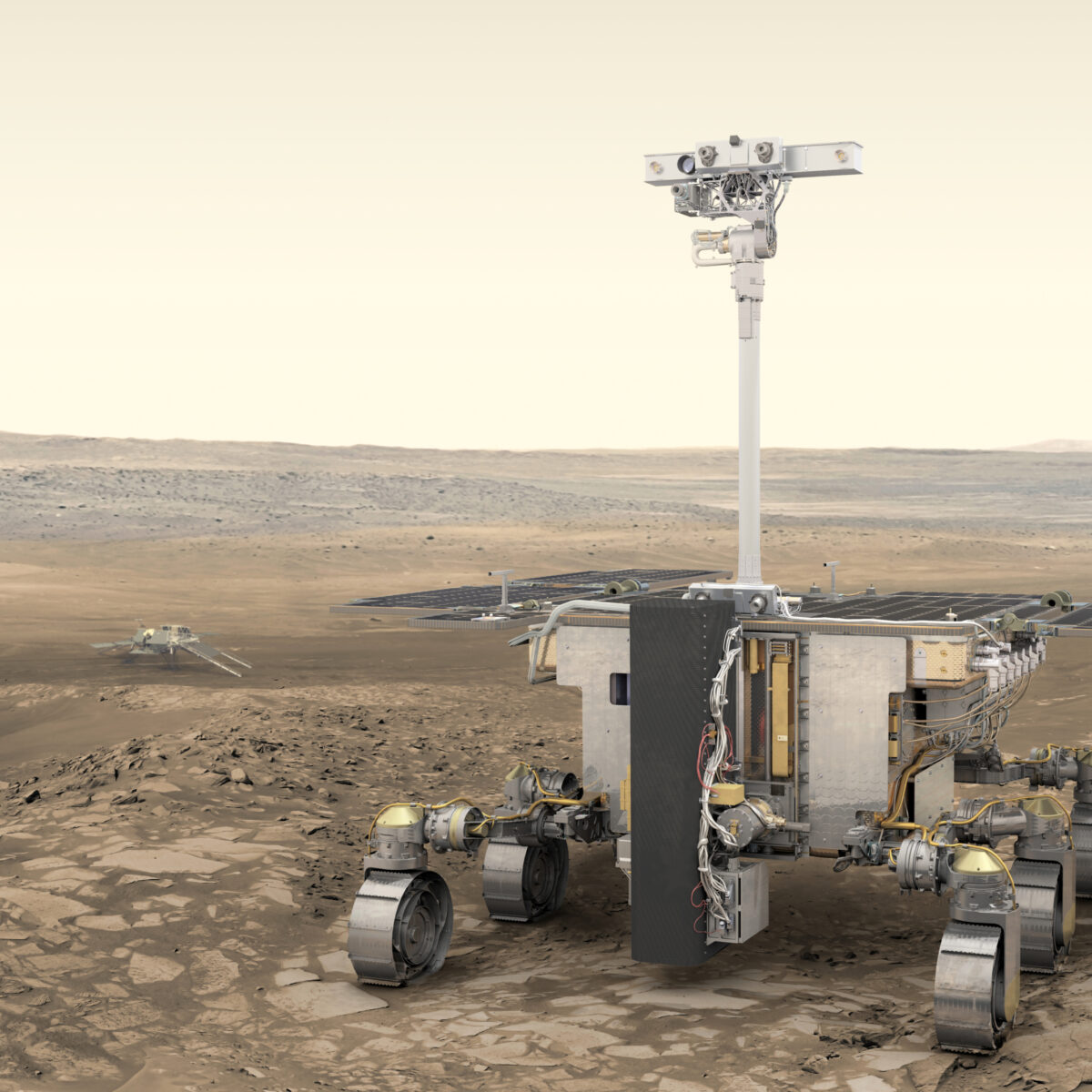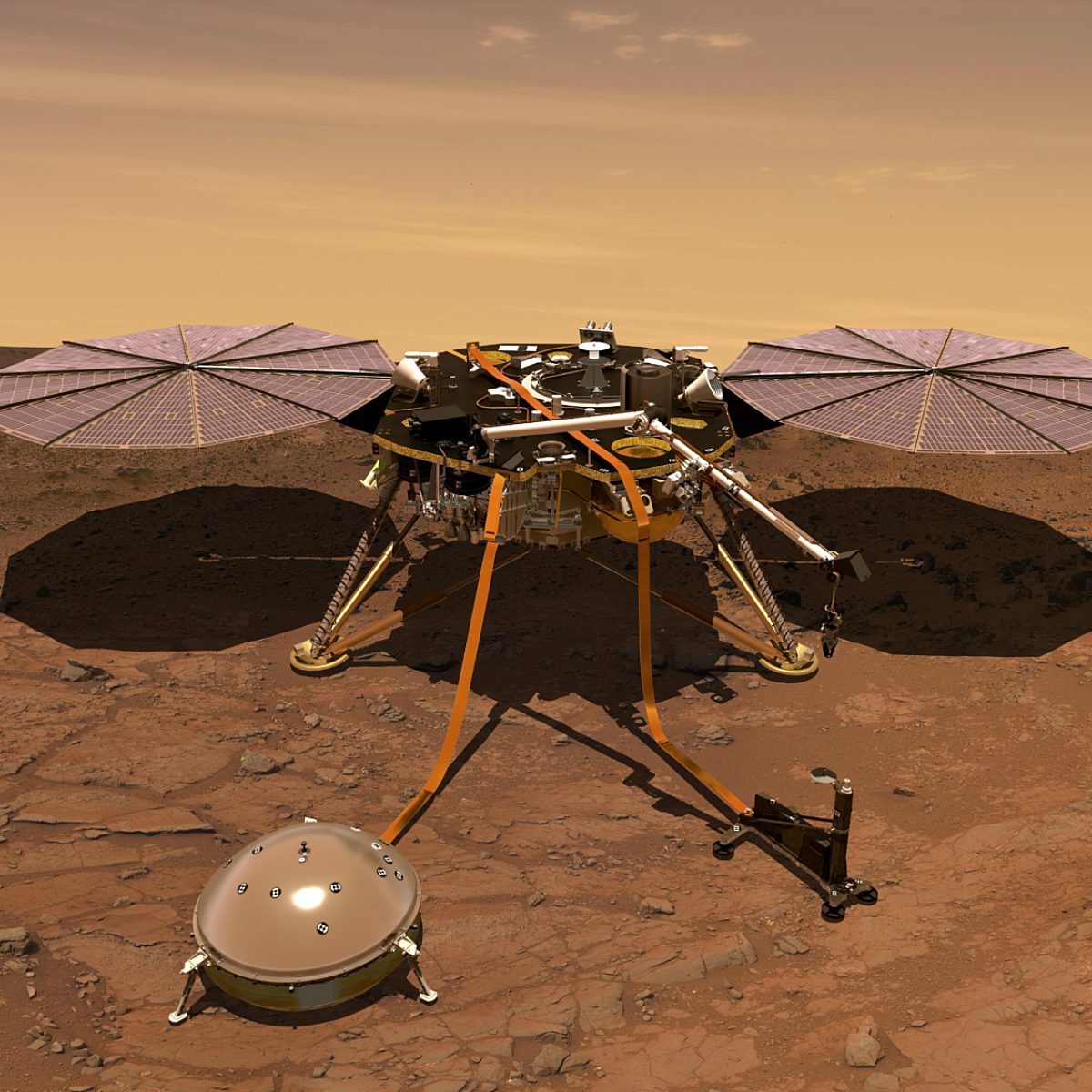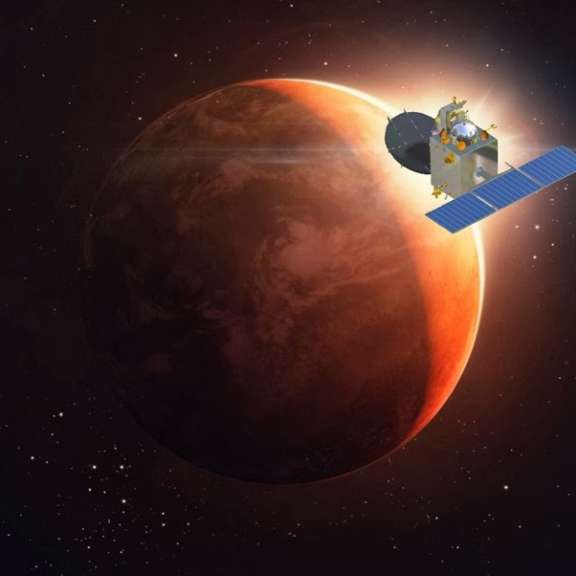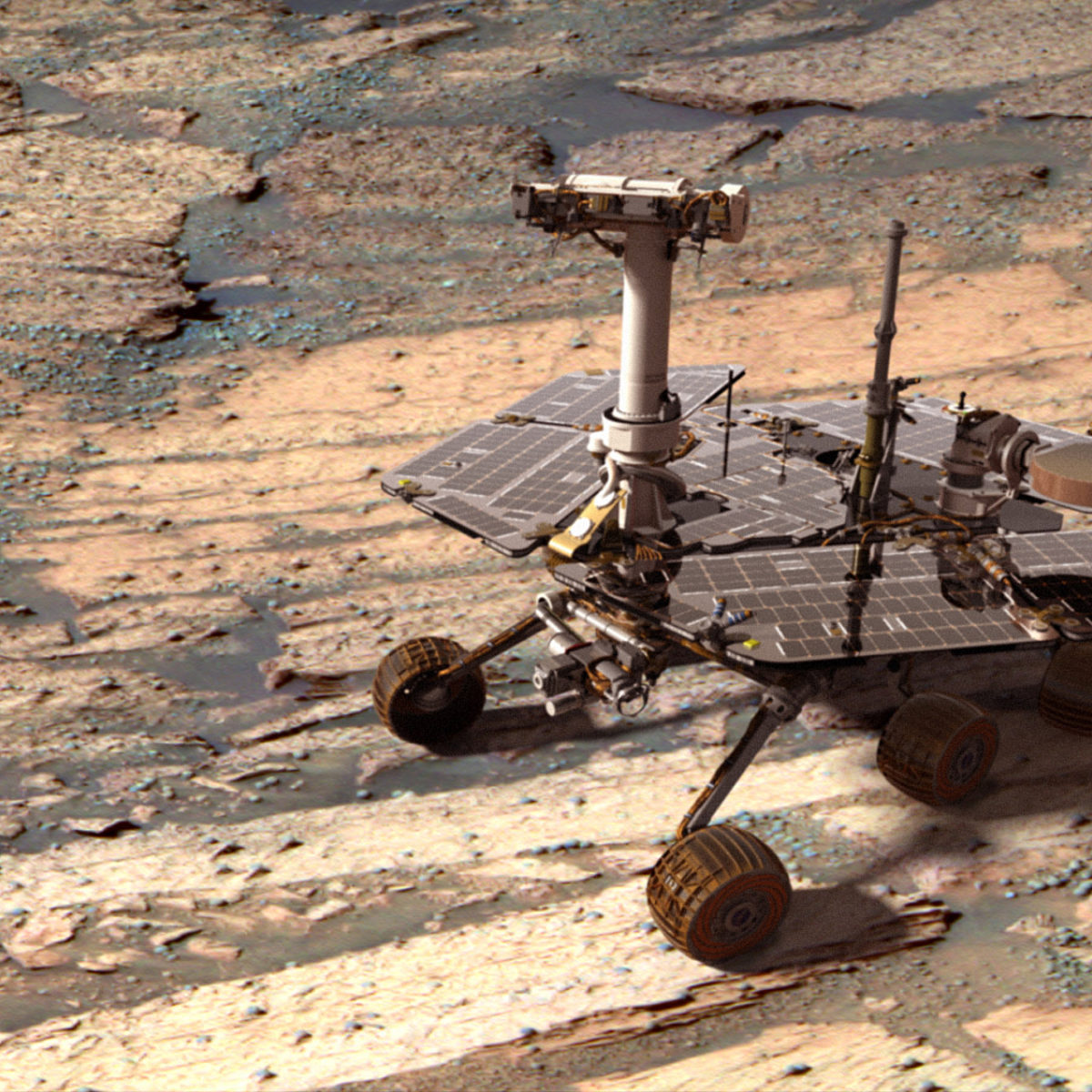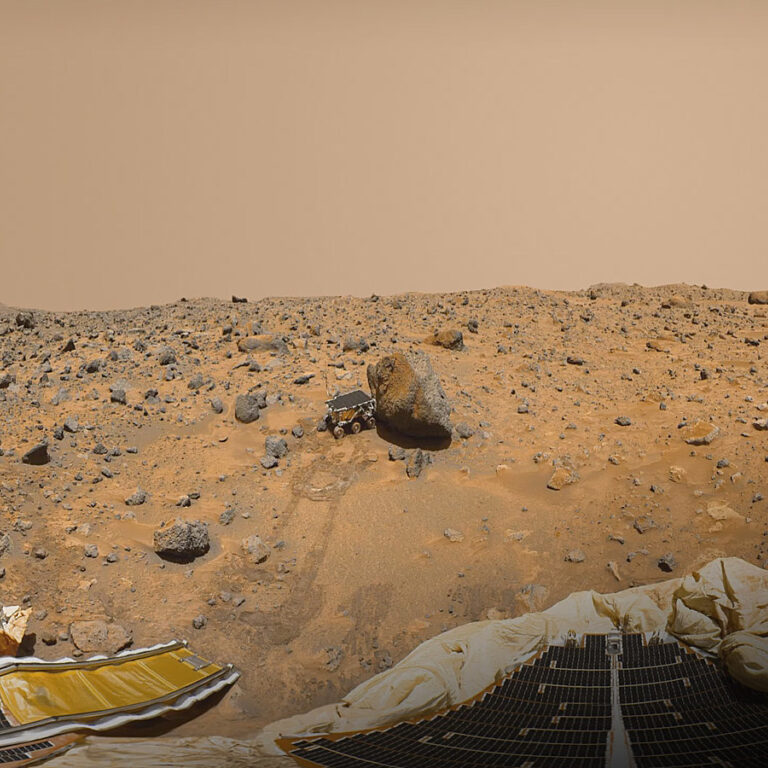Every mission to Mars ever
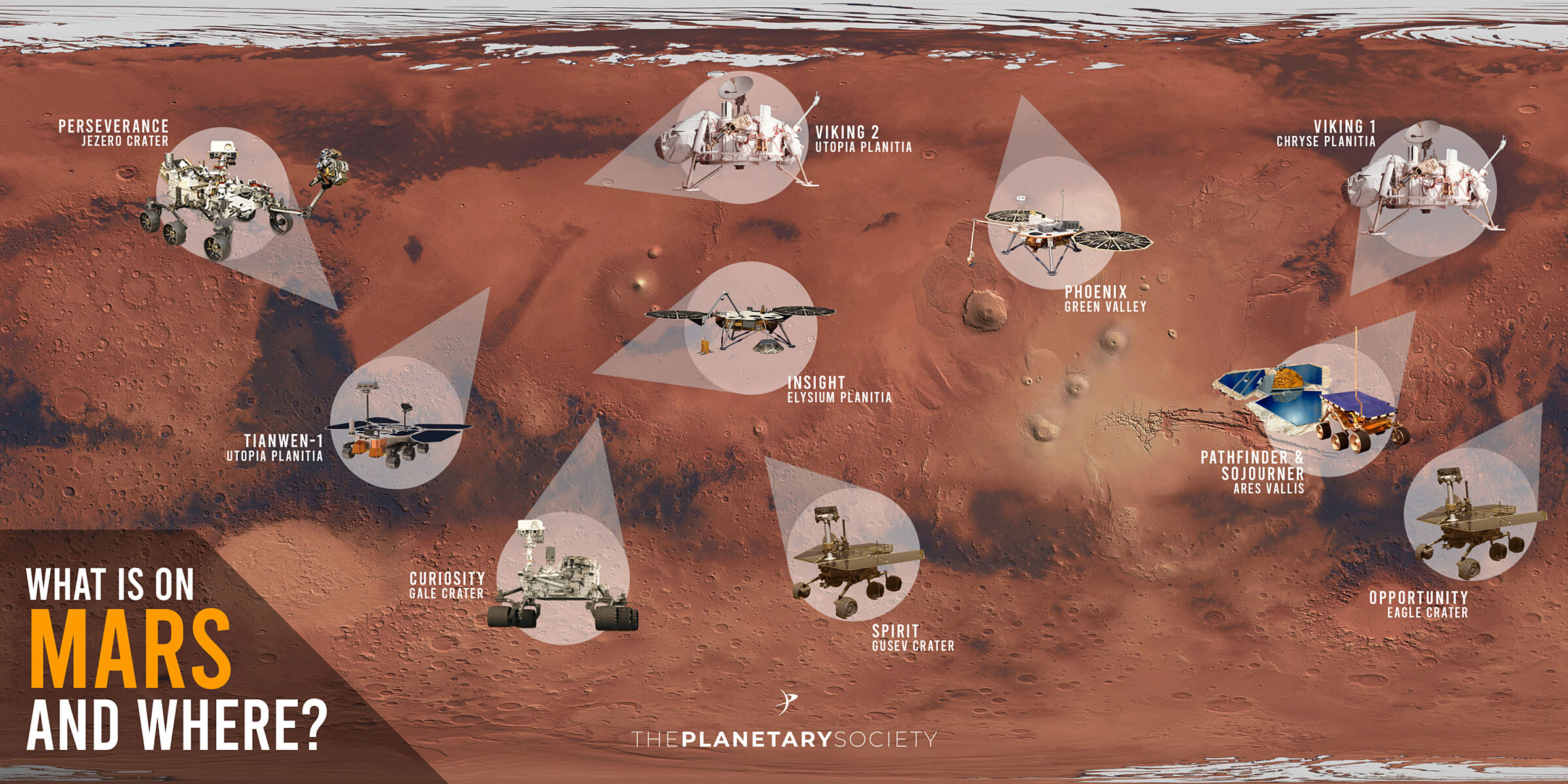
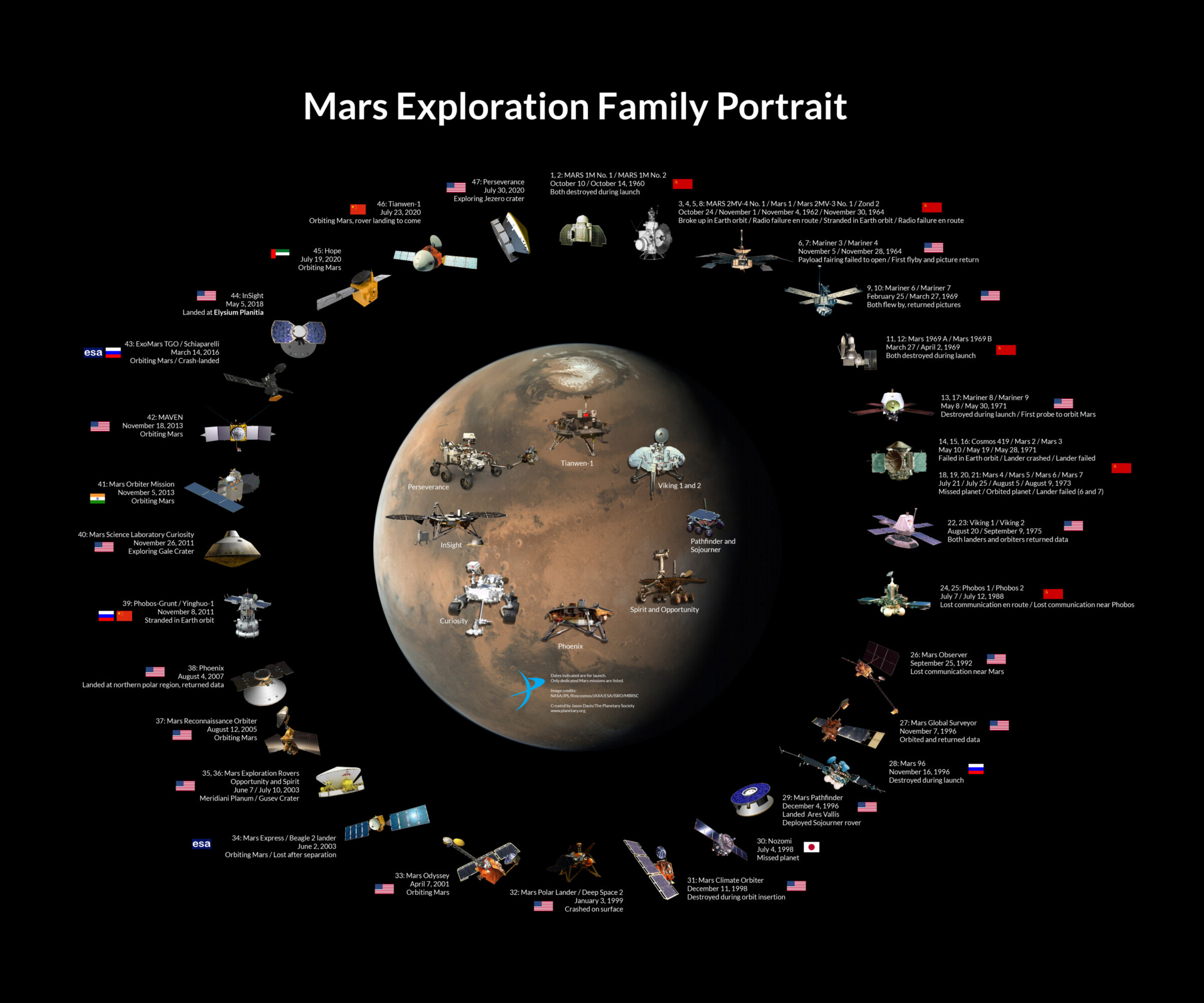
Active Missions
Perseverance, NASA's newest Mars rover
NASA's Perseverance rover is searching for past life on Mars and collecting samples for future return to Earth.
Tianwen-1 and Zhurong, China's Mars orbiter and rover
China’s first Mars mission is searching for pockets of water beneath the surface that could host life.
Hope, the United Arab Emirates' Mars mission
The UAE Hope Mars Mission is building a complete picture of Mars' climate.
The ExoMars Trace Gas Orbiter, mapping Mars’ atmosphere
The ExoMars Trace Gas Orbiter, a collaboration between the European Space Agency and the Russian space agency Roscosmos, launched in March 2016 and arrived at Mars later that year.
MAVEN, studying how Mars lost its atmosphere
NASA's Mars Atmosphere and Volatile Evolution spacecraft, MAVEN, studies how Mars loses its atmosphere to space. The orbiter also relays communications between surface missions and Earth.
Curiosity, exploring Mars' surface
NASA's Curiosity rover landed on Mars in 2012 to search for evidence that the planet could once have supported Earth-like life.
The Mars Reconnaissance Orbiter, studying the Red Planet's climate and geology
NASA's Mars Reconnaissance Orbiter is an orbiting spacecraft studying the geology and climate of the planet since 2006. It hosts the most powerful high-resolution camera ever sent to Mars.
Mars Express, studying Mars from orbit
Mars Express was the European Space Agency’s first planetary mission when it launched in 2003.
NASA's Odyssey, studying Mars' surface
Odyssey monitors Mars’ surface changes and is a critical communications relay between surface spacecraft and Earth.
Future Missions
ESCAPADE
The NASA-funded Escape and Plasma Acceleration and Dynamics Explorers (ESCAPADE) mission will launch in 2024. It consists of twin Mars orbiters that will answer deep questions about how the red planet's formerly thick atmosphere has been stripped away by solar radiation over time.
MMX, Japan’s Martian Moons eXploration mission
MMX launches in 2026 to study Mars' moons and return samples from Phobos to Earth in 2031.
Mars Sample Return, an international project to bring Mars to Earth
Despite advances in space technology, certain science questions, including whether or not a Mars rock contains signs of ancient life, can only be answered in Earth-based laboratories.
China Mars sample return
China is planning to launch a series of missions in 2030 that will return a sample from Mars.
ExoMars Rosalind Franklin rover
The European Space Agency's Rosalind Franklin rover will search for signs of life on Mars.
Past Missions
InSight, NASA's Mars lander that studied the planet's interior
InSight was a Mars lander studying the red planet's interior to learn how other worlds are made.
Mangalyaan, India’s first Mars mission
Mangalyaan was India's Mars orbiter that observed the planet from 2014 to 2022.
Phobos-Grunt
Russia's Phobos-Grunt sample return mission never left orbit due to a rocket failure, and eventually reentered Earth's atmosphere and crashed into the southern Pacific ocean. It was carrying The Planetary Society's LIFE experiment.
Rosetta and Philae
The European Space Agency's Rosetta and Philae spacecraft flew by Mars on 25 February 2007 on its way to comet 67P/Churyumov-Gerasimenko.
Phoenix
NASA's Phoenix spacecraft landed near Mars' north pole to study the water ice found close to the surface there. Its arm dug trenches into the soil and delivered samples to sophisticated chemical analysis instruments. It carried The Planetary Society's Visions of Mars DVD.
Mars Exploration Rovers
The twin Mars Exploration Rovers (MER), Spirit and Opportunity, were robot field geologists. They confirmed liquid water once flowed across the Martian surface. Both long outlasted their planned 90-day lifetimes. Following their landings on 3 and 24 January 2004, Spirit drove 7.73 kilometers and worked for 2210 sols (Martian days), until 22 March 2010. Opportunity drove 45.16 kilometers and worked for at least 5111 sols; the rover stopped responding on 10 June 2018, and the mission was declared over on 13 February 2019.
Mars Polar Lander
NASA's Mars Polar Lander would have studied a region near Mars' south pole. It crash-landed, carrying The Planetary Society’s Mars Microphone, the first crowdfunded science instrument to fly to another planet.
Nozomi
Originally scheduled to arrive at Mars in October 1999, Nozomi failed to gain enough speed during an Earth flyby on December 21, 1998. The spacecraft also used much more fuel than predicted. A looping trajectory was developed, including two more Earth flybys, to return Nozomi to Mars for orbit insertion in December 2003. But on April 21, 2002, a powerful solar flare damaged Nozomi’s computer. As a result, Nozomi’s hydrazine fuel froze during the long interplanetary trek and mission controllers were unable to place it into orbit. Nozomi flew by Mars in 2003 at a distance of 1,000 kilometers (600 miles), and is now in a two-year orbit around the Sun.
Mars Climate Orbiter
Failed Mars orbiter (NASA)
Launch: December 11, 1998
Mars Climate Orbiter was lost on September 23, 1999, when a mathematical conversion error placed the spacecraft too close to Mars at the time of orbital insertion. Mars Climate Orbiter carried a few re-flown instruments from Mars Observer, marking the second failure for those experiments.
Mars Pathfinder & Sojourner
The Pathfinder mission deployed the first-ever wheeled rover on Mars, and technologies developed for it paved the way for future, more sophisticated exploration of the red planet.
Mars 96
Failed Mars orbiter, lander, and two penetrators (Russian Space Agency)
Launch: November 16, 1996
The rocket carrying the spacecraft launched successfully, but its fourth stage ignited prematurely and sent the spacecraft crashing into the ocean. Several of the science instruments originally built for Mars 96 were later flown on ESA’s Mars Express.
Mars Global Surveyor
Highly successful orbiter (NASA)
Launch: November 7, 1996
Mars arrival: September 12, 1997
Contact lost: November 5, 2006Mars Global Surveyor was the first completely successful Mars orbiter since Viking 1 shut down in 1980. The start of Mars Global Surveyor’s science mission was delayed due to a problem with one of its solar panels that caused its aerobraking period to last for a year and a half. Once science operations began in March 1999, Mars Global Surveyor provided scientists with a wealth of images and data, including the highest-resolution images yet achieved from orbit. Many of the Mars Observer instruments were re-flown on Mars Global Surveyor.
Mars Observer
Launched in 1992, Mars Observer was designed to study the Red Planet from orbit. On August 21, 1993, only three days away from Mars, all contact with the spacecraft was suddenly lost. It is possible that Mars Observer followed its onboard program and is in orbit around Mars. However, the results of failure investigations suggest that a fuel line ruptured during tank pressurization, which would have caused the spacecraft to spin uncontrollably and fail to enter orbit. Most of the science instruments that were originally built for Mars Observer were eventually “re-flown” on subsequent orbiters.
Phobos 2
Mostly failed Mars orbiter and two Phobos landers
Launch: July 12, 1988
Mars arrival: January 29, 1989Phobos 2 was designed to orbit Mars and land a "hopper" and a lander on the surface of Phobos. The spacecraft successfully went into orbit and began sending back preliminary data. Then, on March 27, 1989, just before the spacecraft was to move within 50 meters of Phobos and deploy the two landers, the spacecraft's onboard computer malfunctioned and the mission was lost.
Phobos 1
Failed Mars orbiter (USSR)
Launch: July 7, 1988
Phobos 1 was designed to study the Sun and interplanetary space while on its way to Mars. Once in orbit around Mars, it was going to study the red planet and take close-up images of its moon Phobos. However, on September 2, 1988, only two months into the flight, controllers on the ground accidentally uploaded software containing a command that deactivated the spacecraft's attitude control thrusters. The spacecraft then turned its solar panels away from the Sun and was unable to recharge its batteries. As a result, the mission was lost.
Viking 1 and 2, NASA’s first Mars landers
No one knew what the surface of Mars looked like up close until NASA's Viking 1 spacecraft landed there in 1976.
Mars 7
Failed descent attempt
Launch: August 9, 1973
The Mars 7 lander separated too early, causing it to miss the planet by 1,300 kilometers (800 miles).
Mars 6
Slightly successful descent craft and flyby
Launch: August 5, 1973
Mars arrival: March 12, 1974The Mars 6 descent craft separated successfully from the main spacecraft and descended through the atmosphere, transmitting 224 seconds of data before abruptly cutting off (either when the retrorockets fired or when it slammed into the ground). Although this was the first data of its kind (from within the Martian atmosphere), most of it was garbled and unusable due to the microchip problem. Mars 6 landed at 23.90°S, 19.42°W.
Mars 5
Initially successful Mars orbiter, failed after 22 days
Launch: July 25, 1973
Mars arrival: February 12, 1974Mars 5 entered orbit successfully, but after completing 22 orbits and returning 60 images the spacecraft malfunctioned and the mission ended.
Mars 4
Failed Mars orbiter attempt (successful as a flyby) (USSR)
Launch: July 21, 1973
Mars flyby: February 10, 1974The microchip problem caused the failure of the Mars 4 orbiter to fire its orbit insertion rockets. It flew by Mars at a distance of 2,200 kilometers (1,370 miles), taking one set of images and collecting limited data. It continued to function after the flyby, returning data from solar orbit.
Mars 2 and Mars 3
The identical Soviet Mars 2 and Mars 3 spacecraft, launched in 1971, each released descent craft 4.5 hours prior to their arrivals at Mars. But the landers had the misfortune of arriving at Mars during one of the greatest dust storms in recorded history. The Mars 2 probe descended at a steeper angle and faster rate than intended and crashed. However, the Mars 3 probe successfully soft-landed near 45°S, 158°W. It operated for 20 seconds on the surface before mysteriously failing, possibly because it was blown over by the wind. Before failing, Mars 3 may have deployed the first tiny rover onto the surface of Mars. The Mars 2 orbiter was successfully placed in an 18-hour orbit, where it completed 362 orbits. The Mars 3 orbiter, short on fuel, ended up in an almost 13-day orbit. Both spacecraft were shut down on August 22, 1972. Together, Mars 2 and 3 returned 60 images of Mars, recorded temperatures, produced surface relief maps, and studied the Martian gravity and magnetic fields.
Mariner 9
In 1971, Mariner 9 was the first spacecraft to orbit another planet. However, excitement for its arrival was subdued by a dark cloud — literally. A Martian dust storm, which had started in late September 1971, had grown to cover most of the planet. Mission scientists had to wait about a month and a half until the dust settled before they could begin the science portion of the mission. Mariner 9 took a total of 7,329 images of Mars, studied its atmosphere and surface, and analyzed the planet's gravity and topography. The spacecraft also provided scientists with the first close-up views of Phobos and Deimos, the two moons of Mars.
Kosmos 419
Failed Mars orbiter attempt (USSR)
Launch: May 10, 1971
Kosmos 419 reached Earth orbit, but its fourth stage rocket, which would have sent the spacecraft on its way to Mars, failed to ignite. The spacecraft re-entered the atmosphere and was destroyed.
Mariner 8
Failed Mars flyby attempt (NASA)
Launch: May 8, 1971
Mariner 8, a twin to the successful Mariner 9, failed to reach Earth orbit.
Mars 1969A and Mars 1969B
The rockets carrying each spacecraft failed shortly after launch, thereby ending the mission before any of the spacecraft could get to Earth orbit.
Mariner 6 and Mariner 7
Mariner 6 and 7 were identical spacecraft arriving at Mars five days apart in 1969. Mariner 6 flew by Mars at an altitude of 3,431 kilometers (2,131 miles) and Mariner 7 at 3,430 kilometers (2,131 miles). Mariner 6 returned 75 images, and Mariner 7 126 images. Data from the twin spacecraft helped establish the mass, radius, and shape of Mars and revealed that its southern polar ice cap was composed of carbon dioxide. The spacecraft are now in solar orbits.
Zond 2
Failed Mars flyby and descent craft attempt (USSR)
Launch: November 30, 1964
Controllers lost contact with Zond 2 after a mid-course correction maneuver while the spacecraft was on its way to Mars. The spacecraft is now in a solar orbit.
Mariner 4
Successful Mars flyby (NASA)
Launch: November 28, 1964
Mars flyby: July 14, 1965
Mariner 4 was the first spacecraft to fly by Mars and obtain close-up pictures of the Red Planet, passing within 9,844 kilometers (6,117 miles) of Mars. It then took four days to transmit the data back to Earth. Mariner 4 imaged a large, ancient crater on Mars and confirmed the existence of a thin Martian atmosphere composed largely of carbon dioxide.
Mariner 3
Failed Mars flyby attempt (NASA)
Launch: November 5, 1964
A shield that was designed to protect Mariner 3's instruments during launch failed to release once the spacecraft had reached Earth orbit. With its instruments covered and the extra weight of the shield dragging it down, the spacecraft was unable to obtain the necessary trajectory to send it on to Mars. The spacecraft is now in a solar orbit.
Mars 1 (Sputnik 23)
Failed Mars flyby attempt (USSR)
Launch: November 1, 1962
Mars 1 launched successfully and began the trip to Mars, returning data on interplanetary space. However, controllers lost contact with Mars 1 on March 21, 1963, when the spacecraft was 107 million kilometers (66 million miles) from Earth and signal was lost. The spacecraft is now in a solar orbit.
Korabl 11 (Sputnik 22) and Korabl 13 (Sputnik 24)
Launched in 1962, the Soviet spacecraft Korabl 11 and 13 both broke apart after reaching Earth orbit.
Korabl 4 (Marsnik 1) and Korabl 5 (Marsnik 2)
Launched in 1960, Korabl 4 and 5 were the Soviet Union's first attempts at interplanetary probes. The third stage of both launch vehicles failed, and neither obtained Earth orbit.


 Explore Worlds
Explore Worlds Find Life
Find Life Defend Earth
Defend Earth



